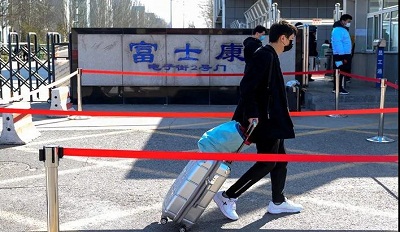
Originally published by Caixin Global with title, “Make Careful Supply Chain Decision for the Future, Not the Past” on March 5, 2020. All rights reserved.
The coronavirus outbreak has wreaked havoc on supply chains. Corporate operations around the world have been disrupted, with China at the epicenter of both the virus and global supply chains for many companies.
A recent report by The Economist says that most multinational firms have been caught off guard and suffered from temporary closures of their mainland-based suppliers. Big firms will try to ramp up production quickly, but it is unclear how soon factories can get back up and running at full capacity. Even though plants are restarting, logistics around and out of China will remain difficult.
According to the Wall Street Journal, tech giant Apple is expected to ship 5% to 10% fewer iPhones this quarter since its largest outsourcer, Foxconn, delayed resumption of work. Leading Korean auto manufacturer Hyundai had to shut down all its factories in South Korea due to lack of auto parts from China-based suppliers, and these factories have only partially re-opened, automobile industry news site Just-auto said. In Japan, several Nissan vehicle manufacturing factories in Kyushu were forced to close for the same reason.
A Shanghai American Chamber of Commerce survey of 127 foreign multinational corporations in China revealed broad concerns. The results show that only 13% of the respondents expected the coronavirus not to impact their revenue in 2020, and most respondents agreed supply chain adjustments would have to be taken into consideration. Some said the outbreak increased their determination to move business out of China, to places such as India.
However, supply chain shifts vary by business, sector and value chain segment. For companies in labor-intensive sectors, many had already been moving out of China to Southeast Asia or other lower-cost countries well before the outbreak due to increases in tariffs and other costs. For companies with large U.S. market exposure, some have moved their manufacturing operations closer to their U.S. customers by building plants in the U.S. Some are moving to other locations with lower U.S. tariffs than China.
For those companies for which China is an overwhelmingly important market, moving their entire supply chains out of China is difficult and doesn’t make strategic sense. This is especially true in industries with complicated supply chains linking myriad suppliers in geographically concentrated clusters and where “just-in-time” supplies are crucial to manufacturing operations. Consumer electronics, cars and advanced machinery all fall into this category.
Supply chain design and management are complicated and delicate issues. Over the last couple of decades, many companies have been deploying their supply chain globally to achieve an optimal combination of quality, cost and speed.
But consecutive external shocks from the U.S.-China trade war and Covid-19 have created a huge stress test. In the short term, supply chains have been severely affected. Many companies are now scrambling to roll out stopgap measures to minimize the impact.
Global CEOs must address the medium- and longer-term question of what to do. They will need to answer several fundamental questions:
1. How will global demand patterns for my products shift after the epidemic?
2. What will be my product-market strategy to address the changes?
3. What is my best guess of the key variables that could affect how I should think about my new supply chains, e.g., trade tariffs, non-economic trade issues such as “national security” concerns, my supplier base, costs, quality, agility and responsiveness? What scenarios are possible, and how can I respond to “black swan” events?
In order to help bring China’s economy back on track, Beijing is likely to make a major push on infrastructure development. It will also likely implement industry incentive schemes, further open market access for private and foreign companies, and provide fiscal stimulus. For example, on Feb. 24, Beijing issued a new policy paper on “the Strategies for Innovative Development of Smart Vehicles” supporting the development of the smart, connected automotive industry in China.
We expect a wholesale upgrade of smart cities across the country. These next-generation smart cities will not only address safety and security issues, but more importantly will also address broad public management agendas like public health. This will involve construction of much more connectivity infrastructure across China. As such, it will also enhance the efficiency and effectiveness of Chinese supply chains in the future.
More innovations will emerge as a result. Traditional offline-driven business models are increasingly moving online in areas such as remote working, education, entertainment, retail and health services.
The performance of online communications platforms such as Zoom and DingTalk exemplifies this trend. Compared to last year’s Lunar New Year break period, DingTalk acquired more than seven times as many newly registered users this year, while Zoom’s daily active users increased nearly five-fold. Automation and robotics will become much more prevalent, and human-to-machine and machine-to-machine interactions will exponentially increase. Smart manufacturing and robotic “last-mile” delivery powered by autonomous vehicle technology will grow more widespread soon.
Deciding on shifting a company’s supply chain is not trivial. It could have major impacts on the effectiveness of the company’s strategy, competitiveness and economic performance. While short-term disruptions in China due to the coronavirus epidemic are painful, thinking through longer-term strategy requires careful deliberation. This will require a deep understanding of China and the dynamics of the world. Linear extrapolation from the past is not sufficient: the right answers will need to come from a perceptive view of the future.

